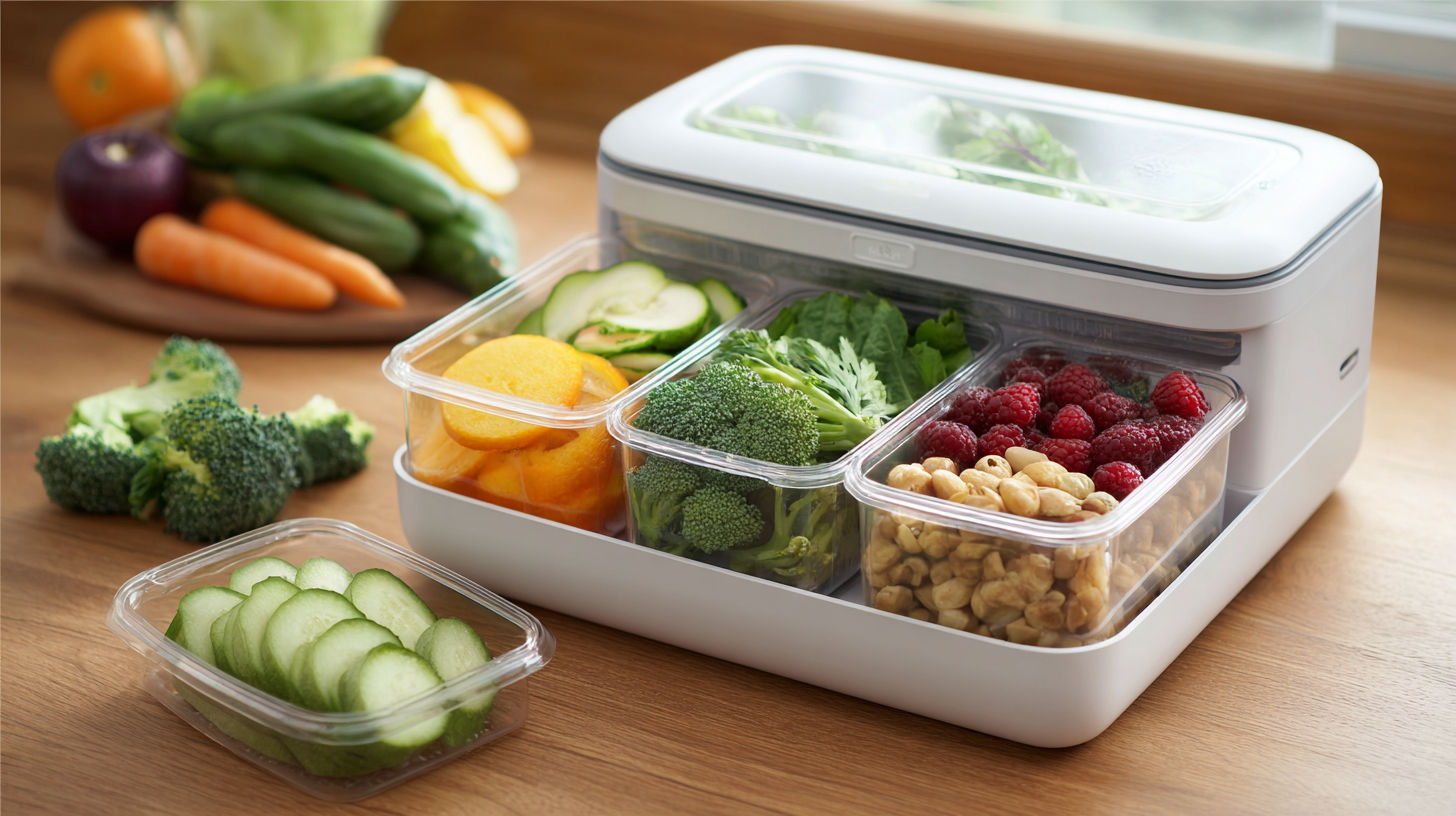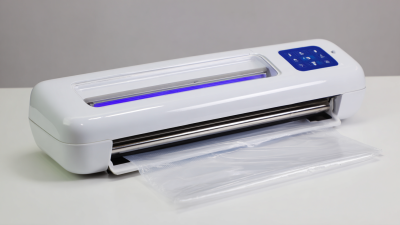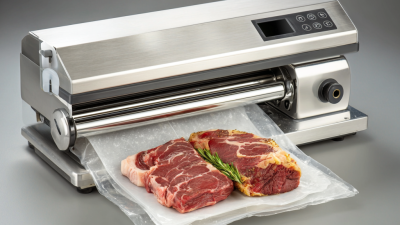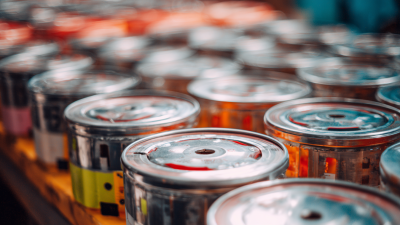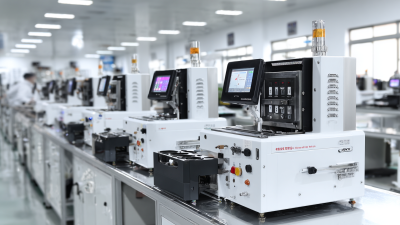Leave Your Message
In today’s fast-paced world, food waste has become a pressing concern, with studies indicating that approximately 30-40% of the food supply in the United States goes uneaten, amounting to around 133 billion pounds annually. The advent of the Food Sealer Machine has emerged as a game-changer in home food storage, addressing this critical issue by extending the shelf life of various perishable goods. According to industry reports, using vacuum sealers can inhibit the growth of bacteria and mold while preventing freezer burn, thus preserving food freshness for up to five times longer than traditional storage methods.

With the capability to vacuum seal everything from fruits and vegetables to meats and snacks, these machines are not only efficient but also economical, allowing households to save money while minimizing waste. As consumers increasingly prioritize sustainability in their food practices, the Food Sealer Machine stands out as an essential tool in the modern kitchen, empowering individuals to take control of their food storage like never before.
The use of a food sealer machine has transformed the landscape of home food storage, offering a multitude of benefits that cater to both health-conscious consumers and budget-savvy households. According to a study by the Food and Drug Administration, approximately 30-40% of the food supply in the United States is wasted, leading to significant economic losses. By employing a food sealer, individuals can prolong the shelf life of perishables, reducing waste by up to 90%, as vacuum sealing effectively inhibits the growth of mold, bacteria, and yeast.
In addition to minimizing food waste, food sealers enhance the convenience of meal prep. A report from the USDA highlights that food sealed with airtight technology retains its nutrients up to five times longer than traditionally stored items. This enables families to buy in bulk, prepare meals in advance, and enjoy fresh, flavorful dishes without the looming threat of spoilage. Furthermore, vacuum sealing protects against freezer burn, ensuring that foods maintain their texture and taste, which is crucial for both home chefs and everyday cooking.
When it comes to maximizing the shelf life of your food, choosing the right food sealer machine can make all the difference. To begin your search, consider the type of food you typically store. For dry goods or snacks, a vacuum sealer with adjustable settings will allow you to tailor the sealing process to protect your food effectively. On the other hand, if you often handle liquids or marinated items, look for a machine with a built-in feature to prevent liquid from being sucked into the vacuum chamber.
Tips: Always pay attention to the size and design of the sealer as well. A compact model may be ideal for small kitchens, while a heavier-duty option is better for those who frequently prepare large quantities of food. Additionally, check for accessory compatibility, such as bag sizes, marinators, and containers that can enhance your food storage versatility.
Finally, read reviews to gauge user experience and reliability. A machine with easy-to-use features and solid customer support will ensure your investment is worthwhile. Look for warranty options as well, which can provide peace of mind as you make your purchase. With the right food sealer, you can unlock the freshness and extend the life of your favorite ingredients effortlessly.
| Feature | Description | Benefits | Price Range |
|---|---|---|---|
| Vacuum Technology | Removes air from bags to preserve food | Extends shelf life, prevents freezer burn | $30 - $500 |
| Different Sealing Modes | Multiple settings for dry and wet foods | Versatility for various food types | $40 - $350 |
| Compact Design | Space-saving size for easy storage | Ideal for smaller kitchens | $25 - $100 |
| Built-in Cutter | Allows for custom bag sizes | Reduces waste, enhances convenience | $50 - $200 |
| Accessories Included | Comes with rolls and additional bags | Value for money, ready to use | $35 - $150 |
 Vacuum sealing has emerged as a game-changer in home food storage, significantly extending the shelf life of various food items. According to a report by the Food Processing Institute, vacuum sealing can preserve food freshness by up to five times longer compared to traditional storage methods. This technique removes air from packaging, effectively slowing down oxidation and preventing the growth of bacteria and mold that often lead to spoilage. Whether it's meats, vegetables, or leftovers, utilizing a food sealer machine can drastically reduce food waste and keep flavors intact.
Vacuum sealing has emerged as a game-changer in home food storage, significantly extending the shelf life of various food items. According to a report by the Food Processing Institute, vacuum sealing can preserve food freshness by up to five times longer compared to traditional storage methods. This technique removes air from packaging, effectively slowing down oxidation and preventing the growth of bacteria and mold that often lead to spoilage. Whether it's meats, vegetables, or leftovers, utilizing a food sealer machine can drastically reduce food waste and keep flavors intact.
To achieve the best results with vacuum sealing, it's essential to follow certain techniques. Pre-freezing foods like fruits and cooked dishes can help maintain their shape and prevent squishing during sealing. Moreover, using quality vacuum bags designed to withstand high temperatures and freezing can enhance the sealing process. The American National Standards Institute emphasizes the importance of removing as much air as possible to create a tight seal, which is crucial for effective preservation. Understanding and applying these techniques not only optimizes freshness but also contributes to a more sustainable kitchen environment by minimizing food waste.
A food sealer machine is often thought of as a solution for prolonging the shelf life of perishable items, but its versatility extends far beyond traditional food storage. In fact, the global vacuum packaging market was valued at approximately $20.3 billion in 2021 and is projected to reach $30.2 billion by 2028, reflecting a growing trend toward smarter food preservation methods. Users have discovered innovative ways to leverage food sealers for a variety of non-food applications, showcasing their adaptability in everyday life.
One creative use of a food sealer is in organizing household items. By sealing clothing, seasonal decorations, or even spare linens, you can save space and keep these items protected from dust and moisture. According to the National Association of Professional Organizers, 80% of people feel overwhelmed by clutter, and utilizing a vacuum sealer can help mitigate this issue. Furthermore, travel enthusiasts have found sealing garments and toiletries useful for maximizing luggage space while keeping their belongings tidy and accessible. Another unexpected application is in sous vide cooking, where sealing food ensures even cooking and enhanced flavor infusion. Studies indicate that sous vide cooking can yield results that are 25-30% better in terms of taste and texture compared to traditional methods, making food sealers a must-have tool in culinary experimentation.
Maintaining the longevity of your food sealer machine is essential to ensure consistent performance and prevent unnecessary repairs. According to a study by the Food Packaging & Preservation Institute, proper maintenance can extend the lifespan of kitchen appliances by up to 30%. Regularly checking and cleaning the sealing strips is vital, as residues from vacuumed foods can accumulate over time and reduce sealing efficiency. Users are advised to wipe the strips with a damp cloth after each use and inspect them for wear or damage at least once a month.
Additionally, the importance of correct storage conditions cannot be overlooked. Storing the food sealer in a dry, cool place, away from direct sunlight, helps prevent overheating and component degradation. The American Household Appliance Association reports that improper storage can decrease the operational lifespan of such machines by nearly 20%. Lastly, consider using your food sealer regularly to keep the motor and internal components in good working order, as infrequent use can lead to malfunctioning due to dust and inactivity. By following these maintenance tips, you can ensure your food sealer remains an integral part of your kitchen for years to come.
